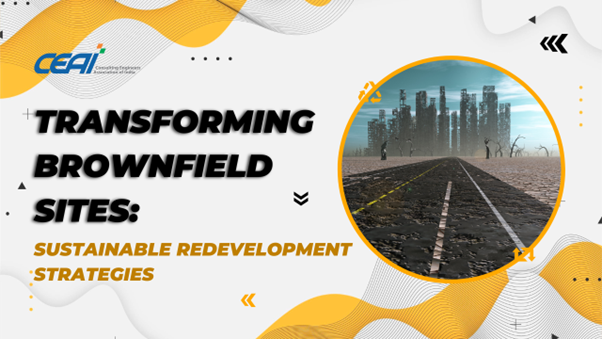
Brownfield sites, once abandoned or contaminated properties, present significant challenges and opportunities for sustainable redevelopment. At CEAI, we understand the importance of transforming brownfield sites into thriving, eco-friendly spaces that contribute to the economic, social, and environmental well-being of communities. In this blog, we will explore sustainable redevelopment strategies for brownfield sites and their positive impact on the environment and society.
The Significance of Brownfield Redevelopment
Brownfield sites hold tremendous potential for sustainable redevelopment. These sites, often located in prime urban areas, can be repurposed to meet the growing need for housing, commercial spaces, and community facilities. Neglected brownfield sites can become eyesores, contributing to urban blight and affecting the overall quality of life in surrounding areas. By revitalizing these sites, we can transform them into valuable assets, promoting urban renewal and sustainable development.

Sustainable Remediation Techniques for Brownfield Sites
The first step in brownfield redevelopment is environmental remediation. Sustainable remediation techniques focus on cleaning up contaminated land while minimizing environmental impact. This involves utilizing natural processes, renewable energy sources, and innovative technologies. For example, phytoremediation uses plants to extract contaminants from the soil, while solar-powered remediation systems provide energy-efficient solutions. By implementing sustainable remediation techniques, we can restore brownfield sites to a safe and healthy condition while minimizing resource consumption and environmental disturbance.
Smart Land Use Planning for Sustainable Brownfield Redevelopment
Smart land use planning is essential for sustainable brownfield redevelopment. This involves optimizing land utilization through compact and mixed-use development, which reduces urban sprawl and promotes efficient use of space. By incorporating green spaces, pedestrian-friendly designs, and access to public transportation, we can create sustainable communities that prioritize walkability, connectivity, and quality of life. Smart land use planning also considers the preservation of natural habitats and the integration of green infrastructure, such as rain gardens and bioswales, to manage stormwater runoff effectively

Resource Efficiency and Sustainable Design
Resource efficiency is a key aspect of sustainable brownfield redevelopment. By prioritizing energy-efficient building designs, we can reduce energy consumption and lower carbon emissions. This includes incorporating features such as proper insulation, energy-efficient lighting, and advanced HVAC systems. Additionally, sustainable design practices promote the use of renewable materials, recycling and reusing construction waste, and implementing water conservation measures. By minimizing resource consumption and waste generation, we can create environmentally responsible and economically viable redevelopment projects.
Community Engagement and Social Benefits
Community engagement is crucial for successful brownfield redevelopment. Engaging with local residents, businesses, and community organizations ensures that the redevelopment aligns with their needs and aspirations. This involvement can lead to increased support, acceptance, and a sense of ownership among community members. Furthermore, sustainable brownfield redevelopment offers numerous social benefits, such as job creation, economic opportunities, and improved quality of life. It can provide affordable housing options, promote social equity, and enhance community well-being.

Economic Revitalization through Brownfield Redevelopment
Brownfield redevelopment not only benefits the environment and the community but also drives economic growth and revitalization. By repurposing underutilized land, we create opportunities for businesses, job creation, and investment. Sustainable brownfield projects attract environmentally conscious businesses and investors who prioritize sustainability and social responsibility. Additionally, the redevelopment of brownfield sites can lead to increased property values, tax revenue, and economic activity in the surrounding areas.
At CEAI, we recognize the importance of sustainable brownfield redevelopment in creating vibrant, resilient, and sustainable communities. By implementing sustainable remediation techniques, smart land use planning, resource-efficient design, and engaging with local stakeholders, we can transform brownfield sites into valuable assets that benefit both
